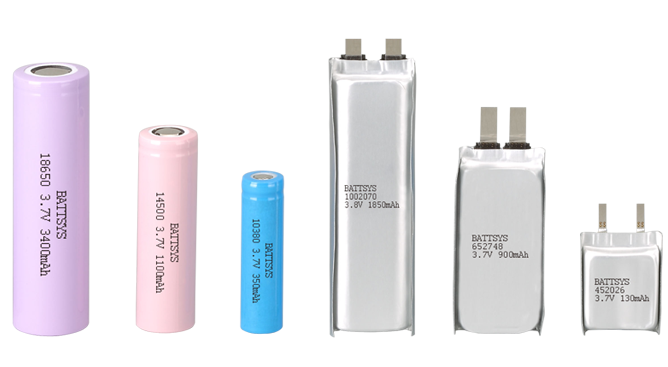What are the precautions for assembling polymer lithium batteries.
Introduction of polymer lithium battery manufacturer: polymer lithium battery is a kind of lithium battery with gel shaped electrolyte and soft package, also known as soft package lithium battery, which makes lithium battery have different skills from ordinary batteries. What are the precautions for polymer battery assembly? Polymer lithium battery manufacturers introduce us from two major aspects:
1、 In terms of battery application, it includes methods for protecting aluminum-plastic composite film, top sealing edge (pole handle end sealing edge), side sealing edge, pole handle, and avoiding mechanical impact and short circuit.

1. Aluminum plastic composite film outer packaging protection: mainly to prevent damage caused by sharp parts piercing. For this reason, polymer battery manufacturers should regularly clean up the surrounding environment of the battery, prevent sharp parts from contacting or bumping into the battery, and wear gloves when using to avoid scratching the surface of the battery with fingernails.
2. Top and side sealing edge protection: To avoid damage to the top and side sealing edges and damage to the sealing function, bending of the top and side sealing edges should be prevented; At the same time, it is necessary to adopt reliable insulation isolation methods for the battery plan to avoid short circuits between the negative electrode and the aluminum-plastic composite film.
3. Pole protection: The positive electrode lead out terminal of the
polymer lithium battery uses an aluminum pole handle, and the negative electrode lead out terminal uses a nickel pole handle. Due to the thin handle, bending should be prevented; During the production process, it is necessary to avoid contact between the pole handle and the aluminum-plastic composite film, and to strictly isolate them with a sleeve film.
4. Avoid mechanical impacts such as dropping, impacting, bending batteries, and accidentally damaging batteries.
5. Prevent the use of metal objects or wires to short-circuit and connect the positive and negative poles.
2、 After a battery is completed, the next step is to precisely combine it with the casing and battery protection circuit module to turn it into a polymer battery. The precautions during this process include:
1. Shell plan:
(1) Satisfied mechanical strength to avoid external mechanical hazards to the battery
(2) When the battery device is placed inside the casing, avoid scratching the battery with sharp edges of the casing;
(3) Avoid short circuits caused by contact between the pure aluminum interlayer of aluminum-plastic composite film and the outside.
2. It is necessary to plan battery protection circuits, including scientific settings for maximum/minimum voltage, overcurrent protection, and overcharging and overdischarging protection for battery units (individual batteries) when using battery combinations.
3. Ultrasonic welding or spot welding technology should be used for the connection between the positive aluminum pole handle and the battery and circuit board through nickel strips.
4. The reliable positioning of the battery, after assembly, should be securely fastened within the casing without movement, ensuring that all lithium battery structures are in a fixed state.
Next, let's learn about the common knowledge of polymer lithium batteries:
1. What is a charging cycle (or charge discharge cycle)?
Many people think that the lifespan of lithium batteries is determined by the number of charges, but this is not true. Strictly speaking, it should be called the charging cycle. A complete charging cycle is to charge 100% and then discharge 100%. The lifespan of lithium batteries is approximately 300-500 complete charging cycles. The correct statement about the lifespan of lithium batteries should be 300-500 complete charge and discharge cycles.
That is to say, assuming a battery is fully charged to 100%: 50% used, 30% charged, this is not a complete cycle, a complete cycle is to charge and discharge two 100% cycles, which is actually a 40% cycle. When you use another 60% to charge
At 40%, there is already a 90% cycle. And so on
Lithium batteries do not have a memory effect, so I agree with Apple's proposition that the use of lithium batteries should be to use some, charge some, not charge for too long, and not to be depleted.
2. The environment in which lithium batteries are used
Using lithium batteries in environments that are too hot or too cold can also affect their lifespan. Therefore, on hot days, it is advisable not to place your phone in a car or expose it to sunlight; If it's over minus 20 degrees outside in winter, don't hold your phone outside (exposed for a long time). It's better to keep it in a warm pocket and use headphones (don't use Bluetooth headphones, they also come with lithium batteries).
Polymer lithium-ion battery: The temperature range during charging is 0 to+45 ℃; The temperature range during discharge is -20 to+60 ℃; The environment for long-term storage of batteries is: temperature -20 to+35 ℃.
3. What should I do if I don't need lithium batteries
The self discharge rate of lithium polymer batteries is still a bit high. To be safe, if not in use, it is best to fully charge them first and then store them in a sealed plastic bag. Take it out and use it once every 1-2 months, that is, charge and discharge it once to maintain the activity of lithium ions. The maximum duration should not exceed 3 months, and it is necessary to take it out and recharge it once. Storing for too long without use can lead to a decrease in lithium ion activity, which has an impact on battery life.


